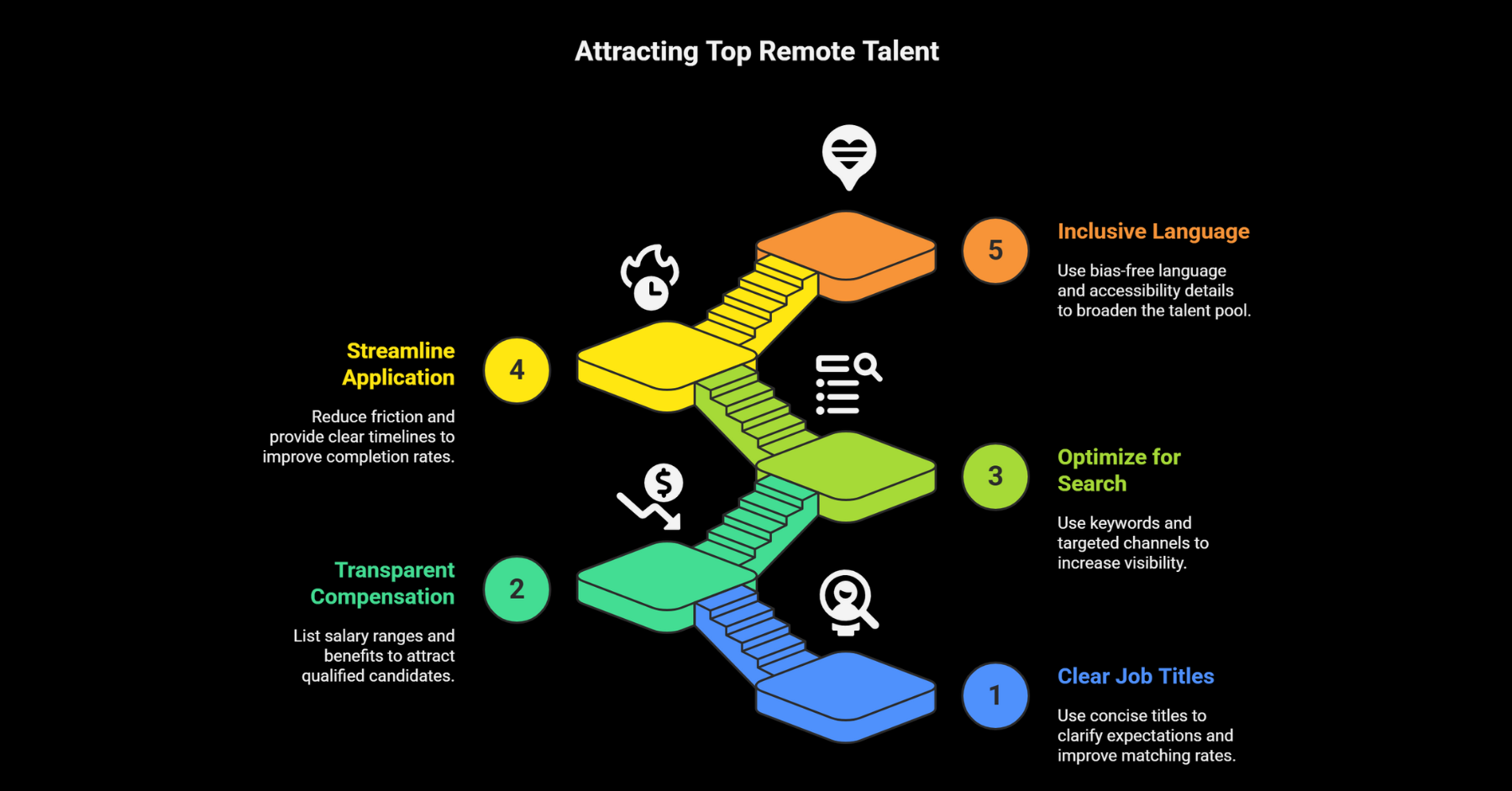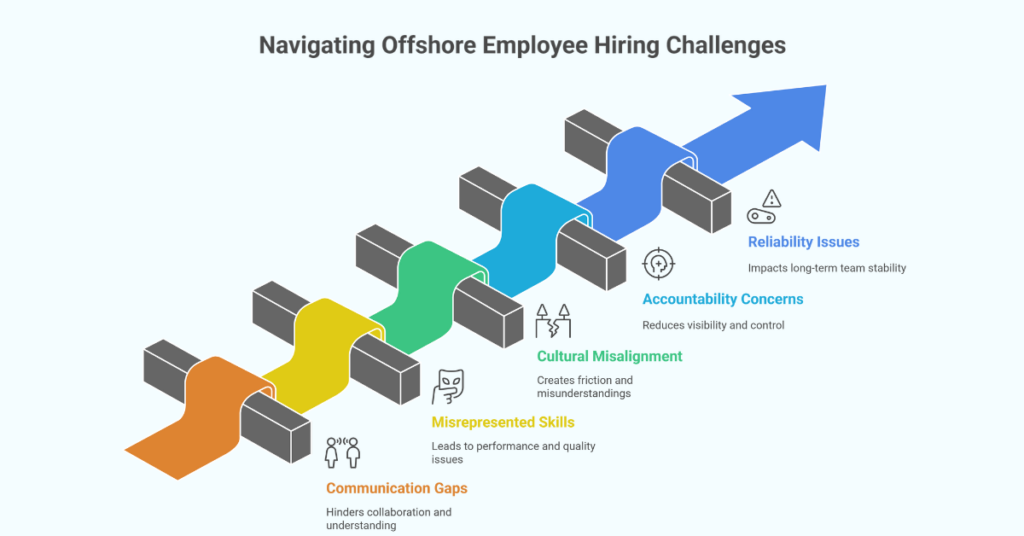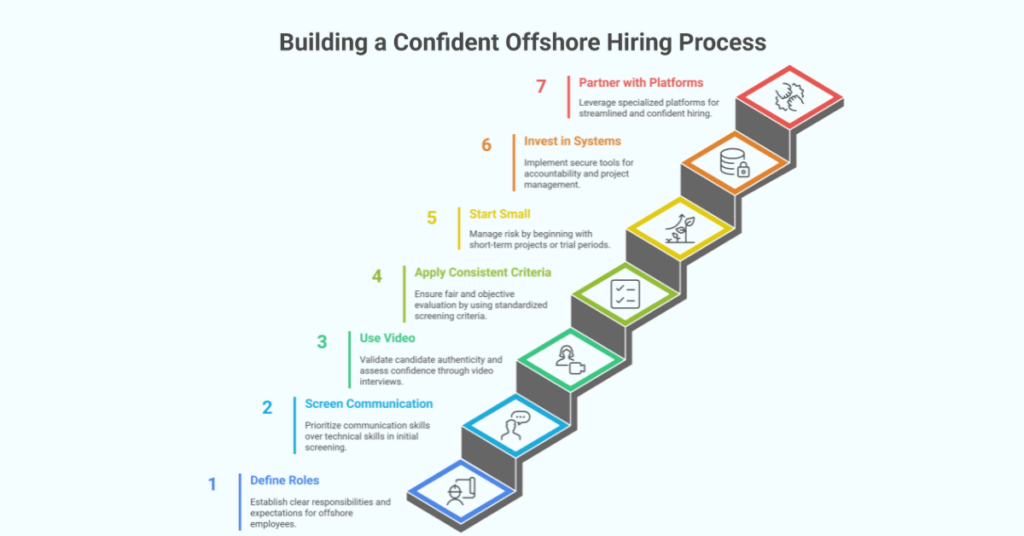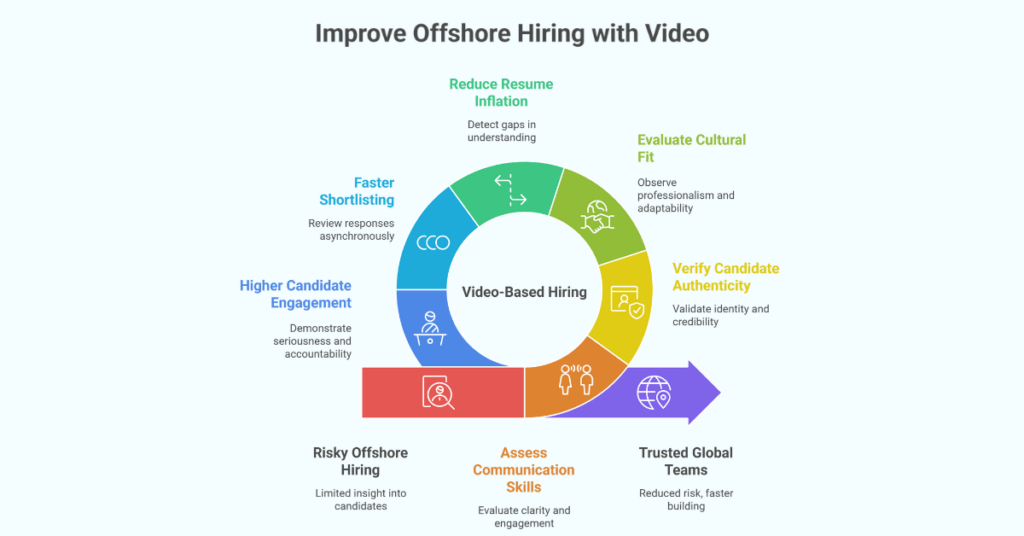Find Remote Work Opportunities — Post clear, inclusive, and targeted remote roles to attract qualified global candidates quickly.
Attracting top remote talent starts with how you post remote work opportunities. Employers who treat remote job postings as a strategic communication tool consistently outperform peers in time to hire, candidate quality, and retention. Clear role definitions, inclusive language, practical screening steps, and transparent compensation all matter deeply to remote professionals who evaluate roles differently than on site candidates. When postings are targeted to where remote talent searches, optimized for search and platform algorithms, and structured to set expectations from day one, employers see higher application relevance and faster hiring decisions. This article lays out five actionable posting strategies that help employers reach qualified candidates fast, reduce screening time, and improve offer acceptance rates. Each strategy includes specific tactics you can implement today to make your remote work opportunities stand out, attract diverse applicants, and lead to better long term hires. Use these approaches to turn your job posting into a conversion engine that moves from views to interviews to hires with minimal friction.
5 Ways Employers Should Post Remote Roles to Attract Top Talent
1. Write Clear, Outcome-Focused Job Titles and Descriptions
Well written titles and descriptions increase discoverability and set accurate expectations.
1.1 Bold job title with role and seniority
Use concise titles that include the role, seniority and core technology or function so candidates immediately recognize fit. A clear title such as Senior Product Designer or Backend Developer clarifies expectations and improves matching rates on job boards and search engines. Avoid vague titles that scatter interest across unqualified applicants and create wasted screening effort. Precise titles help candidates find your posting when they search and reduce the number of irrelevant applications you must process.
1.2 Describe responsibilities as outcomes and priorities
Frame responsibilities around measurable outcomes rather than long lists of tasks to show what success looks like in the role. Explain the primary objectives, the metrics the hire will influence and the top three priorities for the first six months. Outcome oriented descriptions attract candidates who are motivated by impact and reduce mismatched expectations after hire. This clarity shortens interview cycles because both parties can more quickly assess capability against the role goals.
2. Be Transparent About Compensation and Benefits
Salary clarity dramatically increases application quality and speeds decision making.
2.1 Publish salary ranges and compensation components
Listing a realistic salary range and describing bonus, equity or benefits signals respect for candidate time and eliminates obvious mismatches early. Transparent compensation attracts applicants who are both qualified and motivated by the pay structure, cutting time spent negotiating later. Candidates from diverse backgrounds particularly value transparency because it reduces bias and helps them assess economic fit before interviewing. Clear pay information increases conversion from application to interview and improves offer acceptance rates.
2.2 Include remote specific benefits and support details
Describe remote allowances, equipment stipends, learning budgets, and time zone expectations so candidates understand the practical support they will receive. Explaining paid time off policies, health benefits and flexible scheduling options helps candidates evaluate lifestyle fit. Remote specific benefits influence retention by signaling how the company supports distributed employees. Including these details reduces surprises during onboarding and fosters trust that encourages faster acceptance.
3. Optimize for Search and Platform Algorithms
Small SEO and platform optimizations increase visibility among active remote job seekers.
3.1 Use keyword rich headings and tags
Incorporate common search terms such as remote, fully remote, or work from anywhere, along with role specific keywords to improve search ranking on job boards and search engines. Use tags for skills, technologies and industry to increase match accuracy when ATS or platform algorithms surface candidates. Regularly refreshing postings and responding to applicant messages also signals activity and boosts visibility. Optimized listings reach more relevant candidates and increase the velocity of qualified applications.
3.2 Post in the right channels and use targeted sponsorships
Distribute postings across niche communities, remote job boards, and developer or design networks where your target talent already engages. Consider targeted sponsored placements that prioritize high intent audiences rather than broad paid ads, which can waste budget. Use platform analytics to iterate on where the best candidates originate and double down on those channels. Channel targeting reduces cost per hire and increases the quality of inbound applicants.
4. Streamline Application and Screening Steps
Reduce friction and respect candidate time to improve completion rates and accelerate hiring.
4.1 Ask for the essentials and use progressive screening
Request core application elements such as resume, portfolio link and a brief screening prompt instead of a long form to lower drop off rates. Use progressive steps that require more effort only from candidates who pass initial filters, such as a short live coding task or a one minute video answer. This approach reduces applicant fatigue and allows hiring teams to focus on high potential candidates quickly. Progressive screening preserves candidate goodwill while delivering faster, higher quality shortlists.
4.2 Offer clear timelines and next steps in the posting
List expected interview stages, typical time to decision and the person responsible for the role so candidates know what to expect. Providing a timeline reduces uncertainty and encourages candidates to stay engaged throughout the process. Timely responses and scheduled interviews based on advertised timelines prevent candidate drop off and reduce the chance of losing talent to faster moving competitors. Clear communication about process accelerates progression from application to offer.
5. Use Inclusive Language and Explicit Accessibility Details
Inclusive postings broaden your talent pool and signal that remote work is for everyone.
5.1 Use bias free language and emphasize flexibility
Avoid gendered or exclusionary terms, and highlight flexible schedules, asynchronous work options and reasonable accommodations to attract diverse applicants. Use identity neutral language and list multiple pathways of experience such as open source contributions, freelance work, or non traditional backgrounds. Inclusive language invites skilled candidates who may otherwise self select out of roles and increases the likelihood of finding strong, non traditional hires. Expanding your candidate pool improves innovation and long term retention.
5.2 Provide accessibility instructions and alternative application methods
State how candidates can request accommodations in the application process and offer alternatives such as email submissions, phone screen options or recorded video responses to respect different abilities. Clear accessibility notes reduce barriers for candidates with disabilities and demonstrate an employer commitment to equitable hiring. Enabling multiple submission methods increases overall completion rates and signals inclusivity to high quality candidates who evaluate employer values alongside compensation.
Solutions Provided by Remote Recruit to Employers and Job Seekers
Remote Recruit helps employers turn these posting best practices into action through platform features and services designed for remote hiring. For employers Remote Recruit provides job posting templates optimized for remote discoverability, built in salary fields, tagging and SEO guidance, and distribution to niche remote job channels to maximize visibility. The platform supports progressive screening workflows with video prompts, integrated assessments and scheduling tools that reduce time to hire. Compliance and offer management tools simplify compensation transparency and contract generation. For job seekers Remote Recruit aggregates verified remote opportunities, displays transparent salary and benefits information, and offers profile features like video introductions and portfolio linking that make it easier to match to high quality roles. Both employers and candidates benefit from analytics that reveal which posting channels and screening steps generate the best matches so you can continually improve results.
Conclusion
Posting remote work opportunities is a strategic activity that directly affects the speed, quality and diversity of your hires. Employers who craft clear, outcome focused job descriptions, publish transparent compensation, optimize listings for search, streamline application flow, and use inclusive language will attract higher quality candidates and close roles faster. Platforms that support these practices with templates, distribution channels, progressive screening and analytics amplify results and reduce administrative friction. For SMBs and enterprise teams alike, investing a modest amount of time in posting optimization saves hours of screening and onboarding down the line while improving candidate experience and retention. Use the five methods above to elevate your job postings and build a robust pipeline of remote talent who are ready to contribute from day one. Measure performance, iterate on channels and language, and prioritize clarity to transform job views into hires consistently.
Frequently Asked Questions
-
Why should employers publish salary ranges in remote job postings?
Publishing salary ranges reduces wasted applications from mismatched expectations, speeds negotiation, and improves equity by making compensation transparent to all candidates. -
How specific should a remote job title be?
Job titles should include function and seniority and, when helpful, a core technology or domain to improve search relevance and reduce irrelevant applications. -
What is progressive screening and why does it work?
Progressive screening asks for minimal initial information and only requires more effort from candidates who pass early filters, reducing drop off and helping teams focus on qualified applicants. -
Where should I post remote work opportunities to reach high quality talent?
Use specialized remote job boards, niche community sites, professional networks and targeted sponsored placements rather than generic mass job boards to reach higher intent candidates. -
How can I make remote job postings more inclusive?
Use neutral language, list diverse experience pathways, highlight flexibility and accommodations, and provide multiple application methods to broaden your candidate pool and reduce barriers.
Sign up on Remote Recruit today to post optimized remote work opportunities and attract top remote talent.




